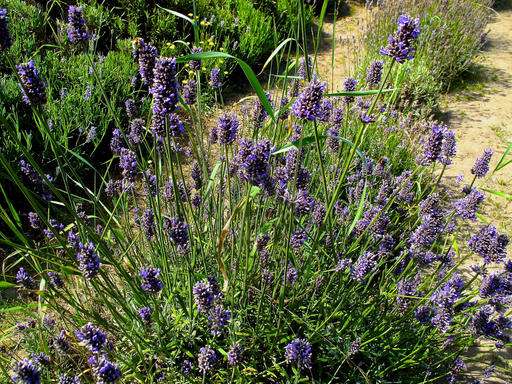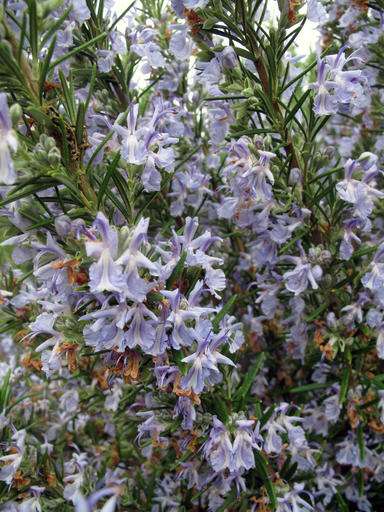Many drought-resistant plants also draw pollinators

Water-wise gardens don't have to resemble sterile moonscapes, devoid of anything but layers of rock and gravel. They can feature scores of attractive drought-resistant plants that invite bees, butterflies, hummingbirds, and other pollen- and nectar-gathering species to your yard.
Xeriscaping is an important gardening approach for the more arid western half of the country, said David Salman, founder and chief horticulturist for High Country Gardens in Santa Fe, New Mexico.
"But regardless of where you live, xeriscaping can be as simple as planting native and Old World plants whose water needs meet an area's normal precipitation, thus needing little if any supplemental watering once established," he said in an email.
Both perennials and annuals have a place in pollinator-supportive gardens. Salman recommends annuals that naturalize themselves by re-seeding, so they are persistent in the landscape. He also suggests using a combination of perennials that will bloom from the start of the growing season until hard frost in the fall. Those can range from trees to shrubs, herbs to succulents, grasses to ground covers.
Start small. Understand which micro sites in your yard favor xeriscaping. Depressions in the ground that retain scarce rainwater, for example. Or dry corners of your property that with some soil amendments could be converted into efficient pollinator pockets.
Environmental controls also will make your yard more attractive to pollinators.
"The use of windbreaks and building-sheltered areas in windy climates is one," Salman said, a nod toward protecting wind-averse bumblebees. "The use of mulches in dry climates is another. Using runoff water from a home's roof to water a shade tree would be still another. This saves both energy (air conditioning) and the need for supplemental irrigation."

Succulents are popular with many gardeners in arid settings, but cacti belong to a plant order with higher durability.
"Some cacti are hummingbird attractors—those that flower bright red," said James Cane, an entomologist with the U.S. Department of Agriculture/ARS Insect Pollinating Research Unit at Utah State University. "Other succulents, like sedums, are pretty attractive to bees. But freezing temperatures can be hard on succulents."
Go easy on using weed barriers like erosion cloth when xeriscaping, Cane said.
"It's important to be judicious with it," he said. "Don't unroll the whole package and then poke holes in it - at least if you want bees and worms. It packs down and eliminates habitat for the ground-nesting bees that comprise about 85 percent of the wild bee populations in the East."
Which plants suited to sun-seared settings are most pleasing to pollinators and gardeners alike?
"Many Old World species like spring-blooming bulbs, catmints, lavender, Russian sage and European salvia are honeybee magnets," Cane said.
"Native species like goldenrod, sulfur buckwheat, milkweed and blazing star are nectar sources for native bees and butterflies," he said. "Hummingbird mint, native salvia, orange honeysuckle and beardtongue are eagerly sought by hummingbirds."
© 2016 The Associated Press. All rights reserved.




















